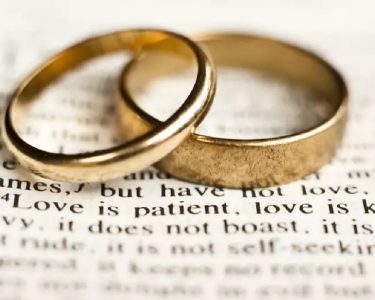6 SIGNS OF A TOXIC RELATIONSHIP
Kyle Benson

If your “intimacy button” differs from your partner’s, you enter a perfect storm preventing both parties from getting what you want.
It’s like starting a weight loss program with Big Macs and supersized french fries on the menu.
Good luck with that!
It is very common for one partner to crave intimacy, while the other becomes uncomfortable when things get close.
If that sounds familiar, read this article.
I used to be an Anxious Attachment type. Or as society would label me: “needy”.
I tended to attract Avoidants because my intense expression of emotional intimacy supplemented their own suppression of emotional intimacy.
When our need for intimacy is met and reciprocated by our partner, our happiness increases.
On the flip side of the intimacy coin, incompatible intimacy lowers our happiness and satisfaction with the relationship.
What are intimacy buttons?
Our “intimacy buttons” are unconscious biological and emotional baggage that has been filled by our past experiences. These past experiences form the emotional blueprint of how we think relationships are supposed to work.

They also shape how we behave within those relationships.
In the relationship I was in before my health incident, I’d never felt such an amazing high as when my Avoidant partner allowed me to get close to her.
But I felt more unwanted than ever when she pulled away.
I had never felt so pathetic and insecure in my life. I craved her love.
She’d give me a kiss, only to bolt away by shaming me, calling me crazy, or ignoring me altogether.
Our unconscious and conflicting desires for closeness affected our intimacy and impacted all of our conversations.
I felt so alone. I might as well have been stranded in the middle of the ocean.
Psychology calls this the Anxious-Avoidant Trap, or as I like to call it, Lost in the Sea of Love.
Meet Anxious Alex and Avoidant Alli
Anxious Alex meets Avoidant Alli using OkCupid, a popular dating website.
After the first few dates, puppy love takes over. They adore each other.
As months pass, Anxious Alex wants to spend more and more time with Avoidant Alli. He comes over after work and drops everything just to spend time with her.
Like most anxious people, Alex is a boyfriend chameleon.
Since Avoidant Alli had become a vegetarian, Alex hops on the bandwagon too, even though he loves meat. Unconsciously, his true motivation is his shaky self worth, and his intimacy style causes him to accept his girlfriend’s identities as his own.
He perceives himself as low value and unworthy of love, so he finds her lifestyle and values more compelling than his own.
He also has a fear of being unloved.
So, he adopts this new value system as an emotional strategy to increase intimacy between them.
His real motivation is fear, not love.
As anxious Alex finds ways to get emotionally close, Avoidant Alli initially loves the attention.
Eventually, both Alex and Alli become incredibly close.

I can tell you this feels amazing. It’s a natural high without the drugs.
But over time, this closeness begins to feel suffocating to Avoidant Alli.

She begins craving space and distance. As a result, she de-activates her intimacy button by withdrawing and behaving in ways that put space between them.

Anxious Alex recognizes this. He sees this distance as a threat to the relationship and activates his intimacy button as a response.

He wants to keep the intimacy high going.
Anxious Alex’s mind becomes a targeted missile, and Avoidant Alli is the target.
Anxious Alex’s anxiety causes him to panic and feel insecure, like the world is ending. This is all an illusion, of course, but Alex’s biological and emotional baggage is creating such intense emotions that logic doesn’t exist.
This flood of emotion motivates Alex to try to get both he and Alli back up to the peak of that amazing intimacy high.
So, what does Alex do?
Alex starts texting her more frequently. He even shows up at her place unexpected. Alex’s dire need to resolve this emotional conflict causes him to use crazy behavior.

Four text messages in an hour.
Anxious Alex feels like his relationship with Avoidant Alli is fragile, so he begins needing to prove to himself she still loves him.
Sadly, the emotional frustration from Alex’s crazy behavior, and Avoidant Alli’s dire need for space, causes Alli to react in hostile ways.

She might shame Alex for acting crazy. She might tell him she isn’t going to talk, text or see him for three or four days.
This eats Anxious Alex alive.
All he needed was for Avoidant Alli to get close to him, but the more intense the withdrawal, the more intense Anxious Alex’s thoughts are about making up for “his” mistake.
This conflict causes Alex’s intimacy button to hit overdrive and focus on all the amazing aspects of the relationship—oh, the memories! He becomes flooded with regret for their recent fight.
Then he tries to work things out.

Meanwhile, Avoidant Alli’s deactivated intimacy button causes her to focus on all of the bad things in the relationship:
- His crazy behavior.
- The amount of time he spends with her.
- His constant texting.
Due to Alex’s narrowed perception of rekindling the relationship, he is willing to compromise his needs to keep the partnership working. Since Alli is contemplating ending the relationship, she wants compensation for entering back into it.
Alex still fails to address the initial conflict—his need for intimacy—and actually finds himself in a worse position than he was before the fight. He works hard to return to the initial, unsatisfactory status quo of the relationship, and tries to compromise more of his needs in hopes of making things work.
Being Lost in the Sea of Love washes any hope of a better life down the drain.
For years, Alex and Alli continue this vicious cycle until inevitably, Alli has enough and dumps him.
With every clash of intimacy styles, the anxious person loses more ground. It’s frustrating and unfulfilling. This toxic relationship has no checks and balances.
Anxious Alex feels the need to fix the relationship and compromises his needs for the Avoidant.
One-sided relationships
These types of toxic relationships feel very one-sided from the anxious person’s perspective.
The anxious person seeks closeness when troubles arise, while the avoidant seeks separation and distance.
Intimacy differences are difficult to harmonize.
This is why I suggest finding a secure person to date.
A lot of people assume since Anxious Alex and Avoidant Ally really do love each other, they’d find a way to work things out. But often this is impossible.
In the typical trap, the anxious partner surrenders and accepts the rules imposed by the avoidant.
Let’s say Anxious Alex and Avoidant Alli end up getting married, despite their unstable relationship.
Things may get worse because intimacy differences impact more than just the relationship.
It’s much more than one person wanting to cuddle and another needing space. It’s also reflected in opposing desires, assumptions, and attitudes.
This may range from the way you sleep with someone in your bed to how you raise children.
Each new change in life (making money, becoming ill, having kids, or getting married) will manifest the differences and expand the gap between partners even more.
The conflict is never resolved because the solution requires too much intimacy.
While the Anxious individual will seek to work out the relationship problems, the Avoidant will unconsciously want to avoid them.
This may lead the Avoidant to becoming hostile or distant.
Since the underlying issue is never addressed, the problem expands like a balloon and causes a lot of unhappiness.
When I was in a toxic relationship, I was completely blinded by love. I couldn’t see how bad it was. This is why I wanted to take some time to provide you some telltale signs of being Lost in the Sea of Love and drowning in a toxic relationship.
I want you to have a fantastic relationship, and intimacy is a core foundation of that.
6 Signs You’re in a Toxic Relationship
In the book Attached: The New Science of Adult Attachment and How it can Help You Find – and Keep – Love, the authors propose six telltale signs of a toxic relationship:
1) Can’t Leave Syndrome. You have a feeling the relationship is not right for you, but every time you think of leaving, the toxic emotional connection to the other person prevents you from doing so.
2) Roller-coaster effect. The relationship is never calm. At times, the Avoidant becomes available to the Anxious partner, allowing the Anxious partner’s intimacy button to relax and feel normal. This allows both partners to get close.
As a result of getting closer, the Avoidant becomes uncomfortable and withdrawn, and the Anxious is forced to drink a cocktail of negative emotions that lead to bat-shit crazy behavior.
The Avoidant’s withdrawal lowers the anxious person’s self-esteem and heightens their insecurity. Even if things do get resolved, both partners will be dissatisfied with the relationship.
3) Emotional Seesaw. Avoidants often inflate their self-esteem and sense of independence in relation to their partner’s inability to be alone. This is why Avoidants don’t usually date each other—they never feel strong and independent in relation to someone who shares the same intimacy button as they do.
4) Stably unstable. Although the relationship may last through the highs and lows, a sense of uncertainty always persists. Since neither partner finds a degree of intimacy either is comfortable with, a sense of chronic dissatisfaction will lurk in the relationship.
5) Meaningless Fights. These types of relationships breed fights about things that shouldn’t be fought about at all. Typically these insignificant fights are not about the minor problems, but rather the amount of intimacy between the partners.
6) Your Partner is the Enemy. The Anxious partner will feel like they are getting treated worse and worse—because they are—once they are close to the avoidant.
So, what’s the solution?
If you’re an anxious lover, I encourage you to:
1) Build your self-esteem by expanding your identity and social circle.
2) Seek a secure partner. If you do want to stay with your avoidant partner, you need to work on expressing yourself and establishing boundaries.
That reminds me…Check out the Six Commandments of Vulnerable Communication and 4 Powerful Exercises That Make A Toxic Relationship Healthy. It will really help you.
If you are an Avoidant lover who feels overwhelmed by intimacy, I encourage you to lean into the discomfort. Allow yourself to be vulnerable, and work with your runaway intimacy desires.
You can change your attachment type to a more secure model by dating a secure person who will not only improve your intimate relationships but also your life. A secure person will give you the space you crave.
If you want to make it work with your Anxious partner, I would advise you to be patient, and to share that it isn’t them that causes your need for space, it’s you.
They may not believe it—so it may take work—but it will ultimately help you get the space you need.



